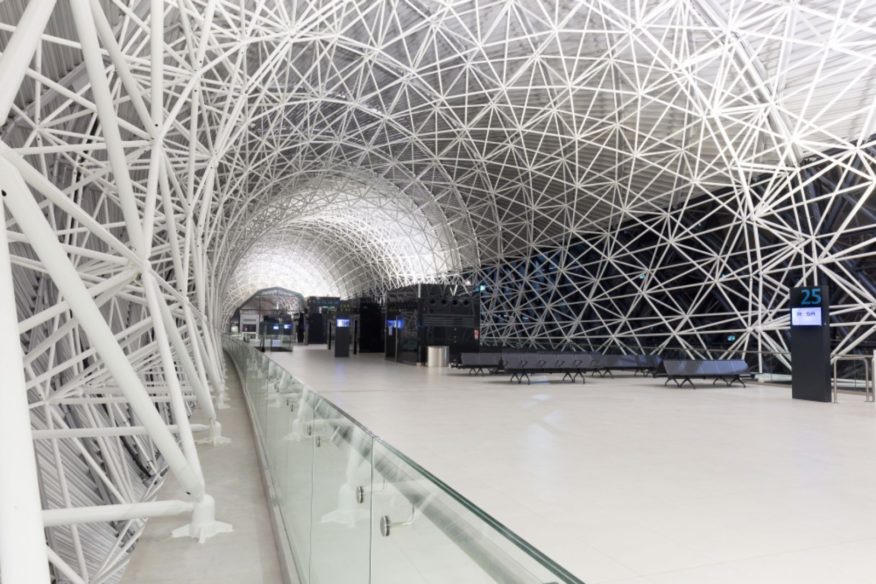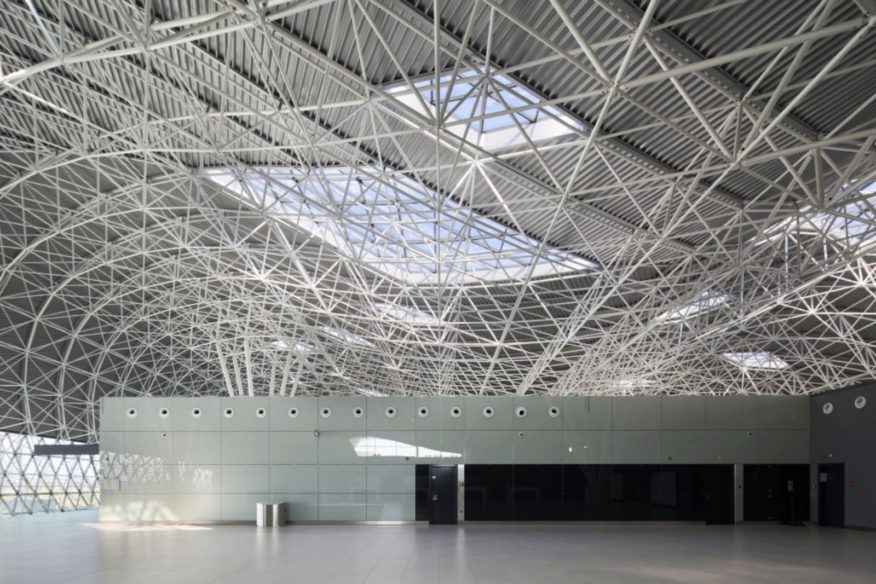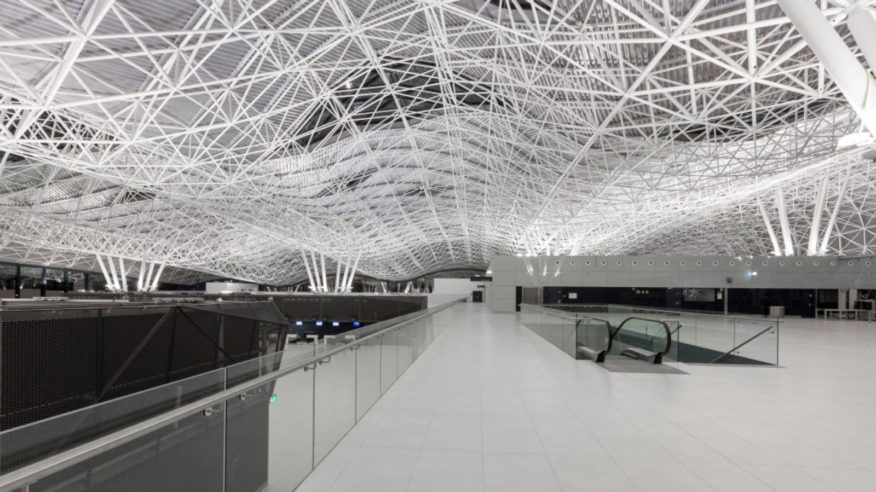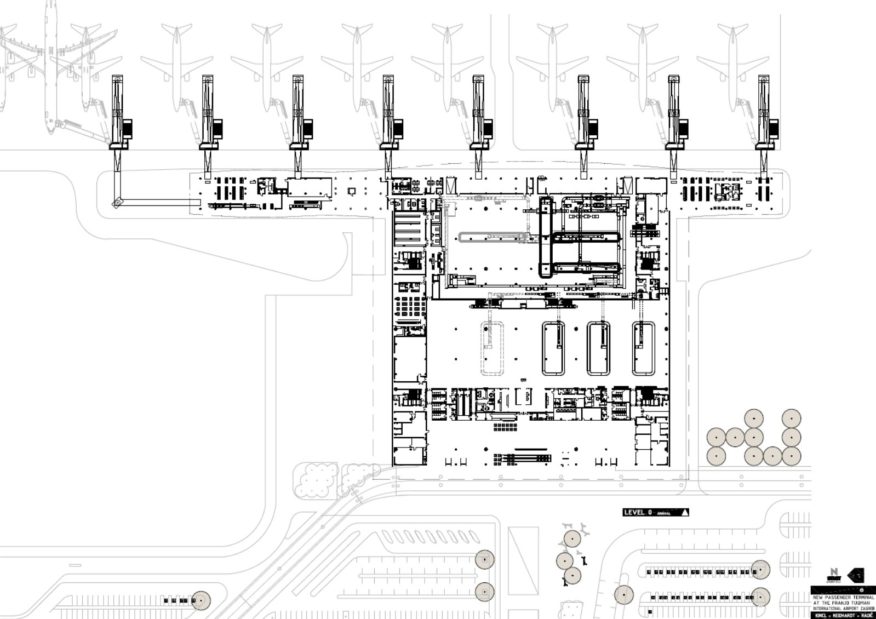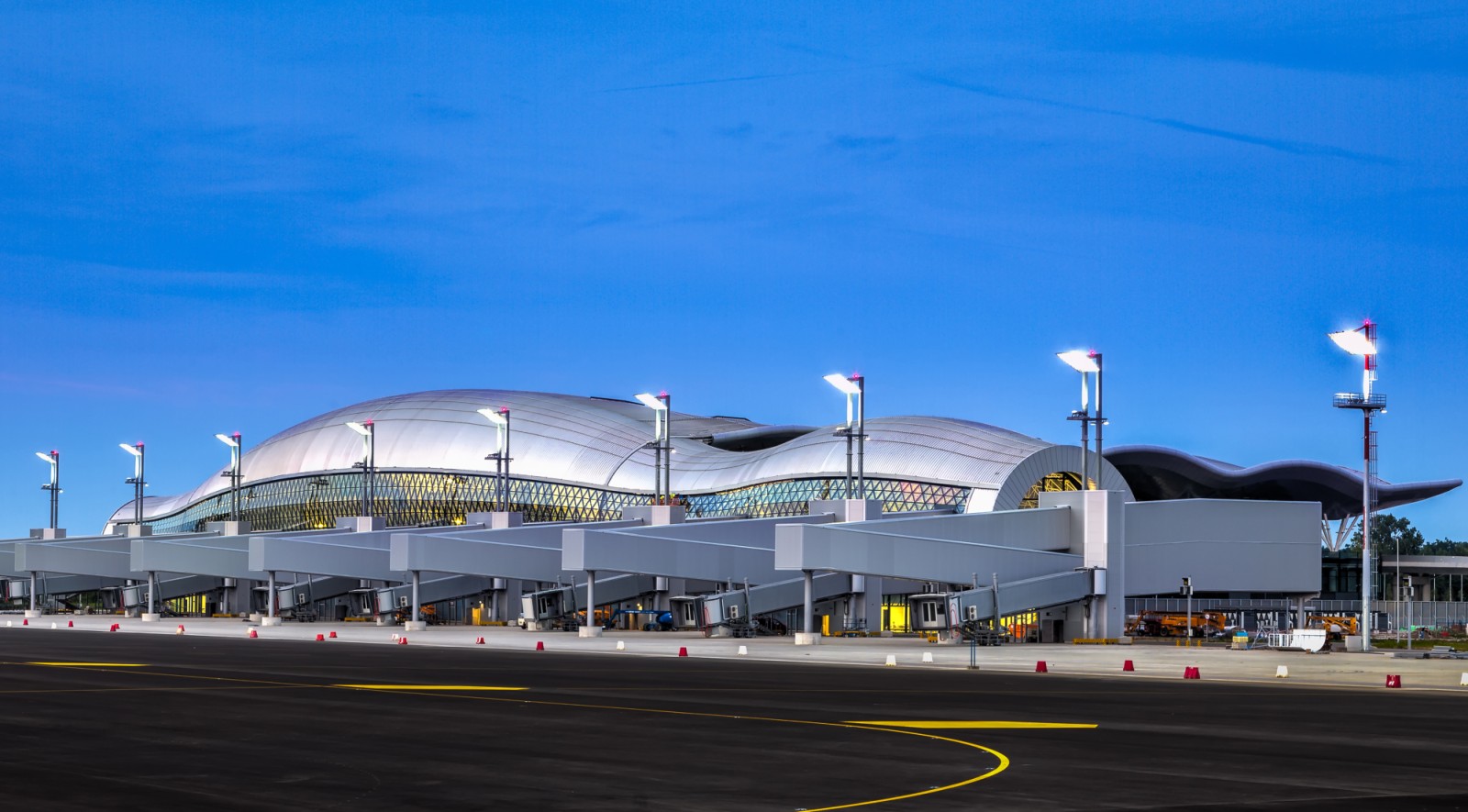
The new terminal complex opened in March 2017 as the 1st phase construction of 65.000 m2 serves up to 5 million passengers a year. The first phase site plan has 8 boarding bridges linked to the terminal building on the north side, and an arrival/ departure ramp with a viaduct on the south. The viaduct is built to accommodate the extension of the terminal building to the east, when the airport capacity increases over 5 million passengers, and in addition to east and west with both piers extensions to 10, 12 and 15 boarding bridges in several phases according to the number of passengers.

The landside surroundings spatial organization at entrance allows the dominance of pedestrian esplanade in the middle. The traffic functions between two traffic roundabouts which serve as connecting points to viaduct ramps leading to or from the departure level curb at 10.20 m above the ground. Internal roads and an arrival/ departure ramps are flanking the central pedestrian surface. A passenger car park is situated on the east, and on the west there is an employees parking, bus and taxi stops and a rent- a- car amenities including their parking.

Main public levels at landside of the terminal the ground and upper departure level are connected by outdoor escalators and elevators and by interior sets of elevators and stairs within circulation cores. Three levels of reinforced concrete structure form the terminal’s base. A dynamic roof envelope, which unwraps itself, to levitate above the terminal hall generates the free dynamics of the structural net – an iconic expression of the landscape and its relief features as original attributions to the generated architectural form.

The distinctiveness of the architectural design is achieved through a composition of hypars. The envelope structure is a spatial truss gently curved in two directions deploying tens of thousands prefabricated steel tubes and nodes based on the triangular off grid module ending in bright, glossy and clean roof surfaces. In the same way, the interior is enriched with the originality of the curved ceiling and construction that is bursting with a multitude of steel elements of the spatial steel structure. Such a computer-generated harmony leads the engineering interpretation towards the top of the architectural concept materialization.
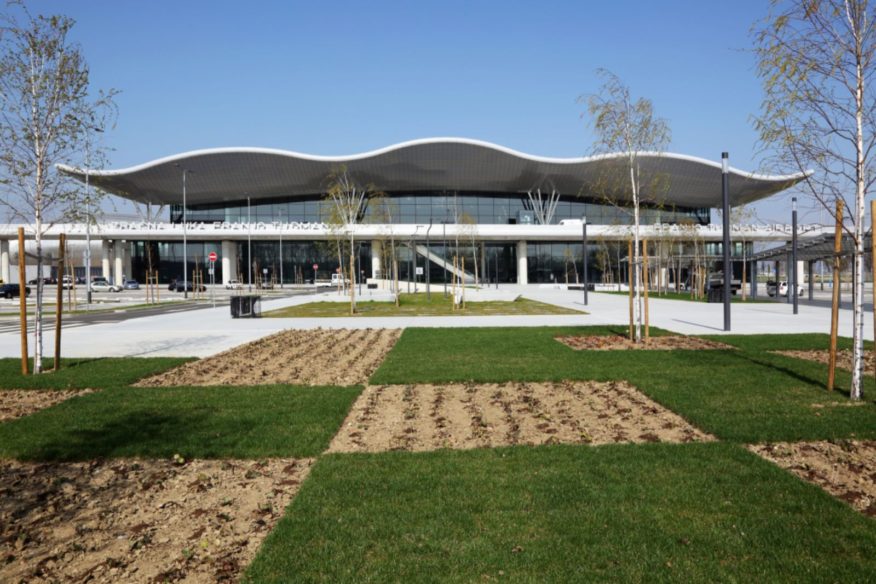
The terminal building interior ambiences bear the attributes of neat, clearly arranged areas that follow the functional requirements of airport protocols. Well-lit spaces with natural and artificial diffused illumination are distinguished with great functionality based on a clear organization of short connections- paths. Large glass facade surfaces give the passengers the chance to enjoy the landscape while moving through the terminal building. The perception of interior and exterior spaciousness contributes the sense of comfort while staying in the terminal building and makes the journey more appealing.

Flexibility of conceptual scheme allows for adaptability with open spaces formed by predominantly 14.40 x 14.40 m modular column grid at the concrete base. Post-stressed reinforced concrete structure is built on a grid pattern with various spans that are multipliers of the base module: 7.20m, 14.40m etc. Inside vertically and horizontally deployed and interconnected spaces, there are 18 reinforced concrete columns ending in upside-down conic clusters of 6 closed-umbrella-like steel pylons on the floor plan grid of 28.80 x 43.20 m.

They carry the dynamic roof envelope structure above the departure hall. This steel truss structure is built on a modular grid of 3.60 x 3.60 m, with an off grid displacement between the upper and lower truss level. The pier design allows for the flexibility that is necessary to sustain the expected increase of air traffic in the future. New Passenger Terminal building dimensions are 153m by 153 m, reaching to a height up to 35 m, with a 284 m long pier, total gross building area of 65 000 m2. Functional organization is developed and distributed vertically among the four levels:

– Arrival level is located at the level “0” ground floor. This level along the north perimeter is also the home of the baggage handling system. At this level on both sides of the terminal there are departure/ arrival hall areas serving bussed passengers. It houses also complementary facilities such as food & beverage establishments, ATM- machines, car rental offices, restrooms, a tourist information center etc.
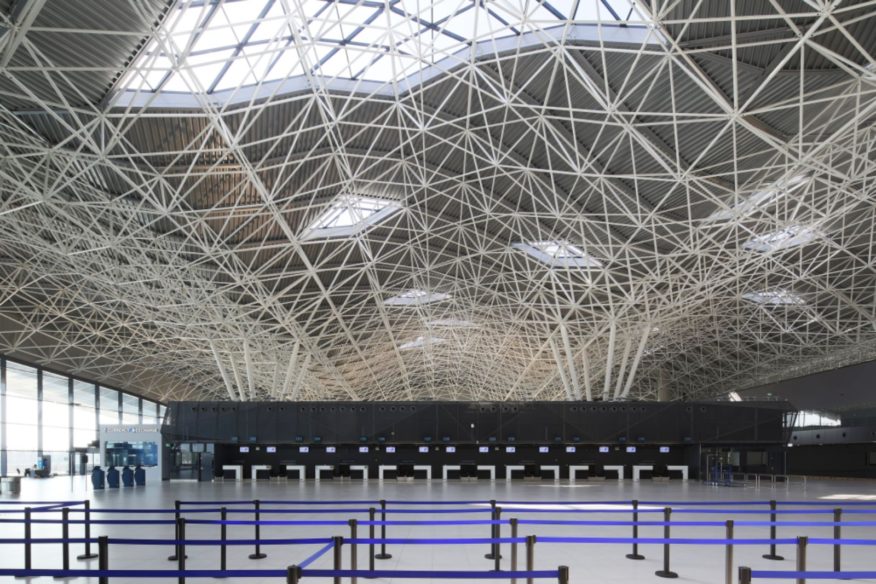
– Arrival gallery/ Transfer- transit level at the 1st floor provides the passengers arriving from eight air bridges to gain their first impressions of the terminal. Various facilities related to airplane travel safety are situated on this floor- security and passport controls, health controls.
– Departure hall areas with check-in islands at the 2nd floor level are accessible from the urban traffic domain by sloped inbound and outbound ramps. There are 30 check-in counters in the 1st phase that will be expanded to 60 check-ins in the 2nd phase, self-check-in points, central info counter, food & beverage establishments and a multiconfessional chapel.
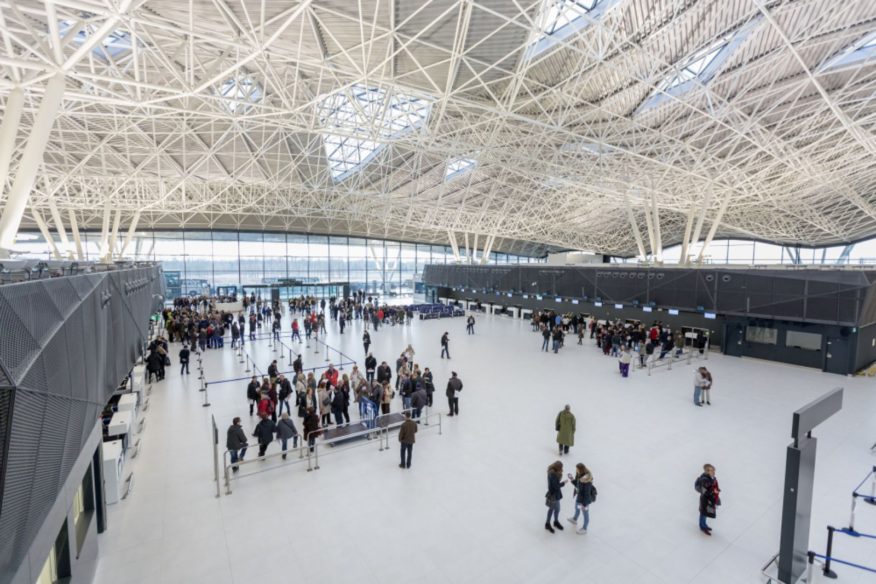
– Leaving the check-in areas passengers reach the boarding ticket control counter and subsequently are invited to ascend to the departure gallery at the 3rd floor level. Upon security check and passports control, passengers descend to duty free/ commercial amenities- shops, bars, restaurants, waiting areas and a CIP lounge, located before the reach of air bridges gates at the departure hall level. The NPT building could sustain a major crisis possibly caused by a failure of all standard energy supply sources. All other procedures support an ecologically sustainable concept of the completed design. Source by Kincl, Neidhardt arhitekti, IGH Projektiranje.

- Location: Zagreb, Velika Gorica, Croatia
- Architects: Kincl, Neidhardt arhitekti, IGH Projektiranje
- Architects in Charge: Branko Kincl, Velimir Neidhardt, Jure Radić
- Client: MZLZ
- Area: 65,860 m2
- Year: 2017
- Photographs: Josip Škof, Studio HRG, Damir Fabijanić, Courtesy of Kincl


